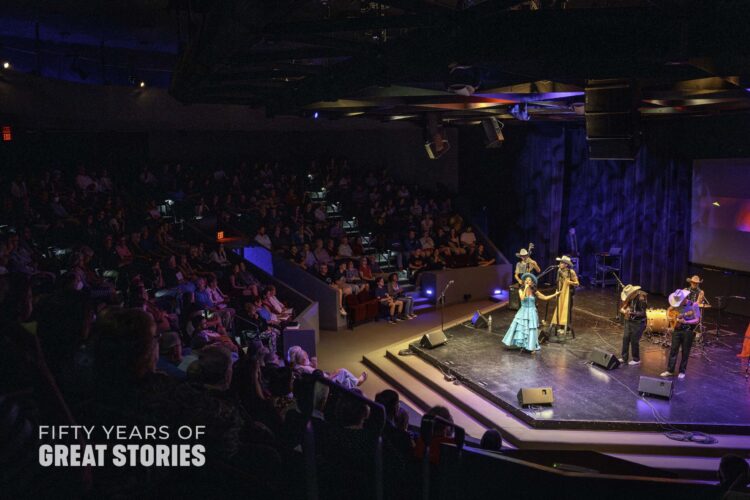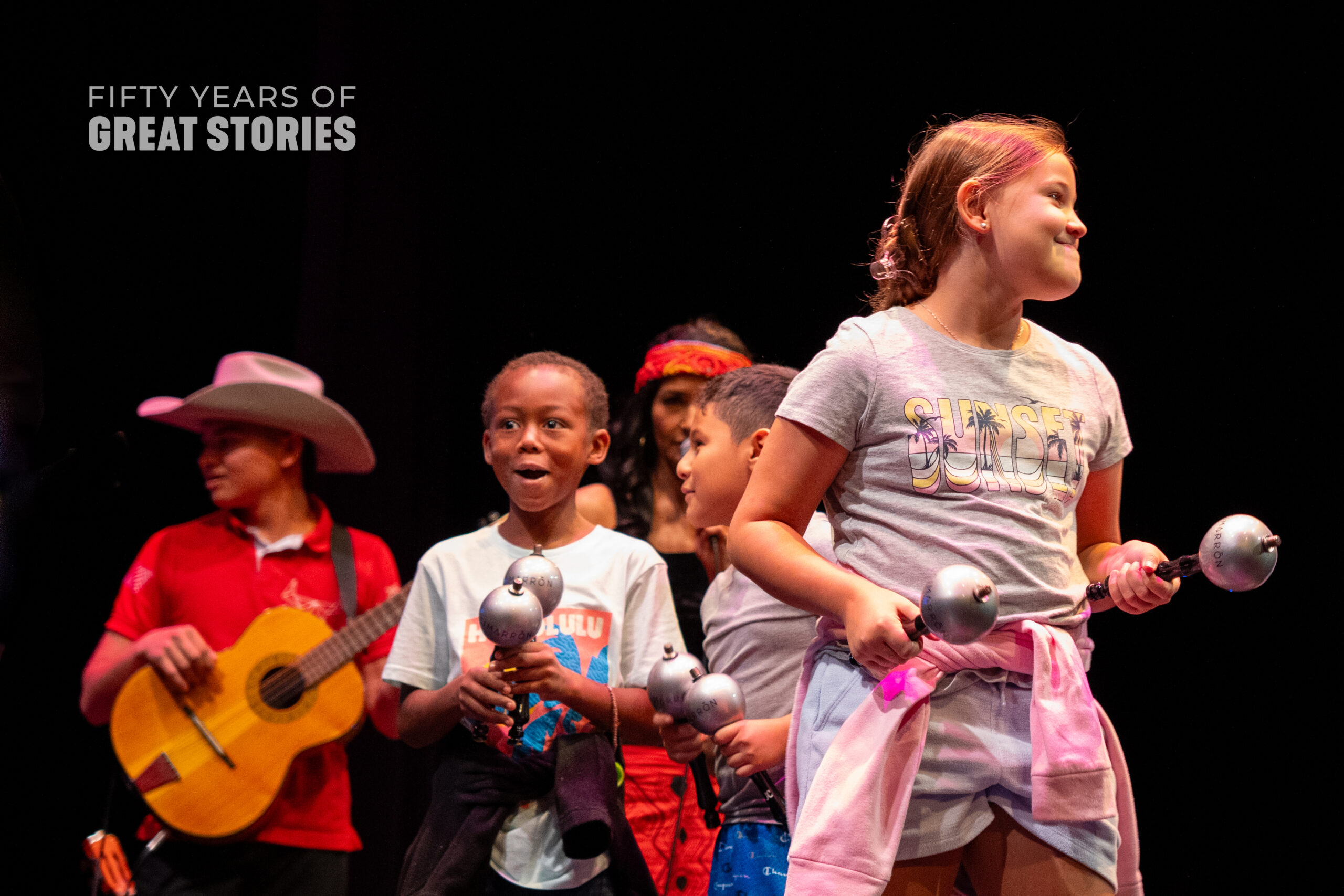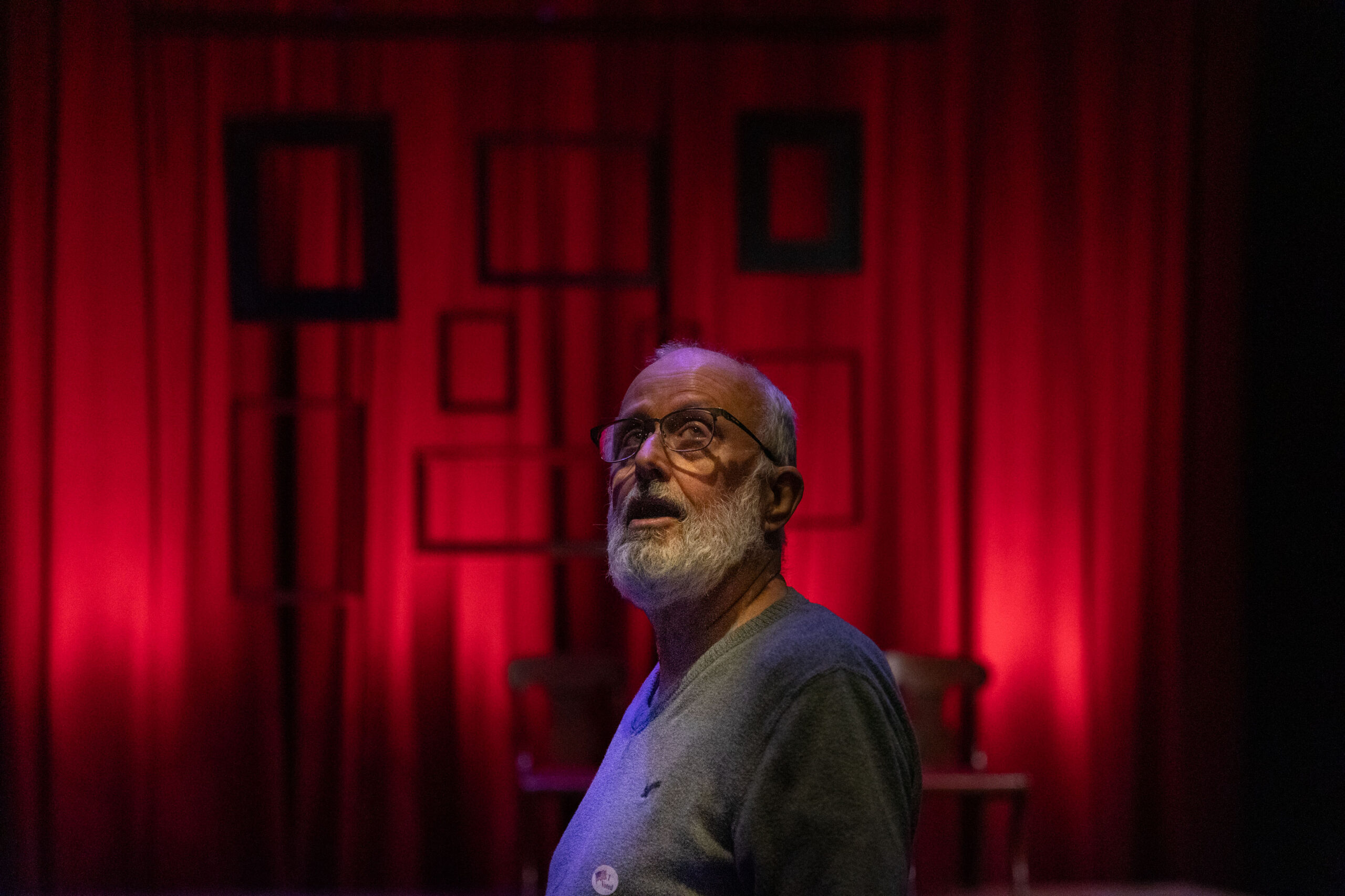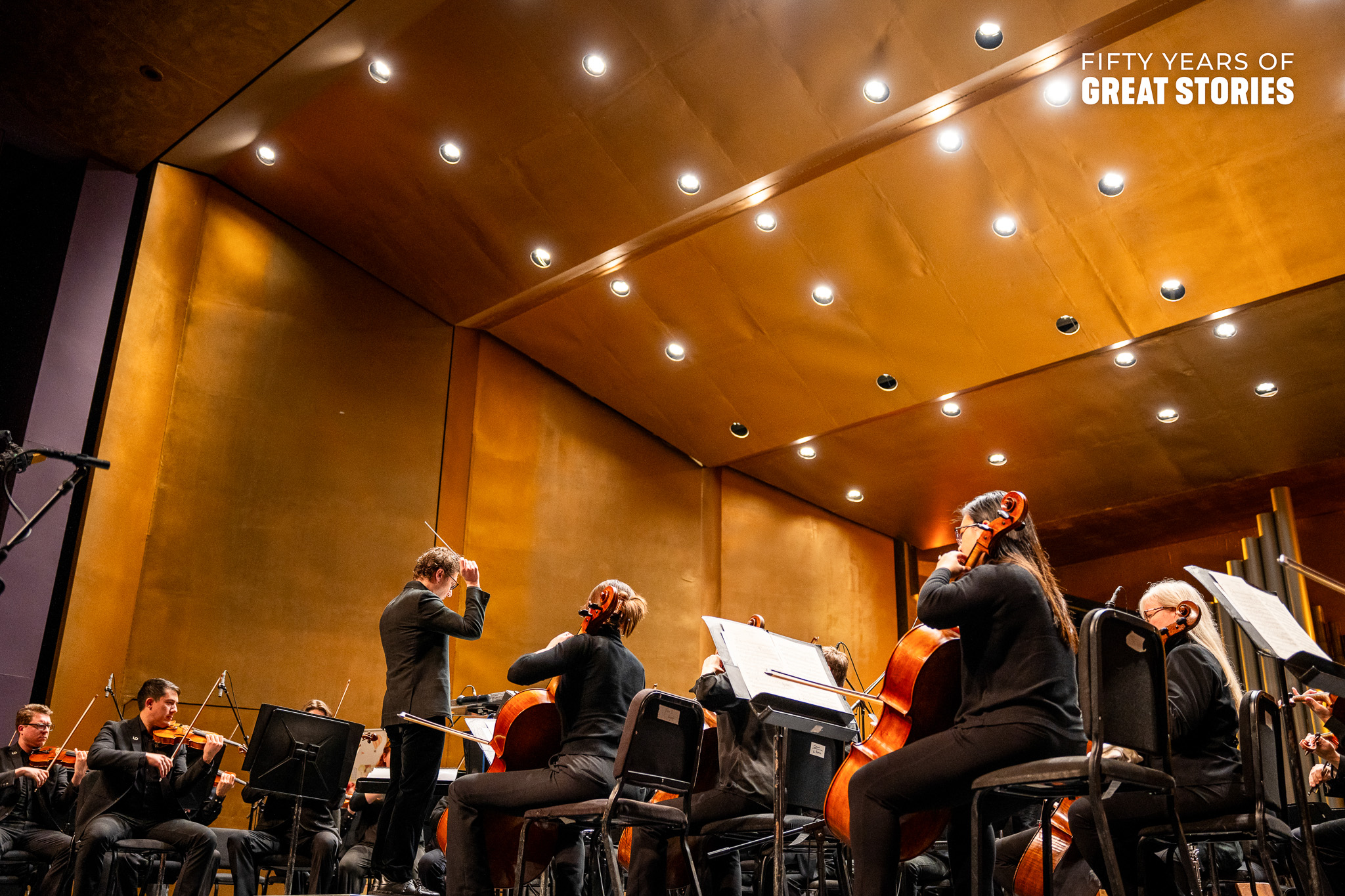Cultural Exchange from the Classroom to the Stage
When Colombian joropo band Cimarrón arrived at the Norton Center on September 7, it was clear that Danville was in for an altogether unique performance. But the day quickly became more than just a performance – it became one-on-one interactions, personal connections, hands-on experiences, and cultural discoveries.
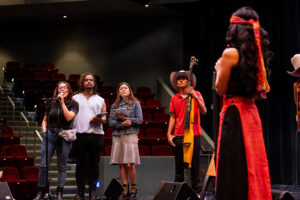
For 65 Centre College students, faculty, staff and community members, the day began with a swift “uno, dos, tres” as Cimarrón exploded into a demonstration of joropo for the Exploring Colombian Culture workshop, co-sponsored by Centre’s Latine Club. Rapid-fire strings, fast-paced footwork, infectious percussive beats and the powerful voice of front-woman Ana Veydó soon gave way to a Q&A led by Latine Club co-presidents Sol Cabrera and Santiago de la Paz. The questions, asked in both English and Spanish, explored topics like feminism amidst the male-dominated joropo genre and bringing Colombian culture to a worldwide audience.
JOROPO is a traditional music genre shared by Colombia and Venezuela, with a forceful rhythm led by string instruments and a powerful voice. Usually, the lyrics are about cattle herding, life in the plains and nature. The music is accompanied by intense footwork-focused dancing.
Centre Philosophy professor and longtime Norton Center collaborator Eva Cadavid was able to take pieces of the discussion to her Feminism and Philosophy class the next day – enhancing the band’s impact across campus even further. With joropo being a male-dominated music genre in Venezuela and Colombia, a female-fronted group is almost unheard of. Beyond bringing joropo music to diverse audiences across the world, Ana defies the stereotype with each performance led by her powerful voice, and Cadavid was able to expand on that in her own classroom.
“In our class, we were able to unpack it even further,” said Cadavid. “Yes, she was powerful. But, how much was she on stage? Whom did she center? She showed us that part of being a powerful person is sharing power. It was obvious that she was in control, but still let her band take the spotlight.”
For students whose cultures are underrepresented or marginalized, seeing similar stories and experiences reflected in the performing arts can be empowering. Sol and Santiago had the opportunity to not just engage in a creative discussion relevant to their own culture, but also lead one.
“It gives [the students] a sense of pride. It gives them a sense of being represented. It opens up spaces for them. It gives them a voice,” said Cadavid.
Just a few hours before the workshop, 300 K-12 students and their teachers from around the region flooded into Weisiger Theatre, ready to be entertained. Jaws dropped and eyes widened as five of the six-piece band launched into their first break-neck-paced melody. Ana entered the stage with a collected composure that quickly transformed into a commanding presence as she started to sing.
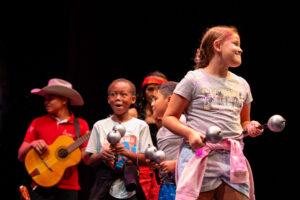
When Ana asked the audience “¿alguien acá habla español?” (“Does anyone here speak Spanish?”), faces lit up, followed by eager shouts of “Si! Si!” For these students, the realization that they were able to connect with the group on a more personal and cultural level was infectious, and the overall audience energy only continued to grow throughout the performance. By the last song, four students were on stage playing maracas along with the band, and everyone else was on their feet dancing along.
Through their music and audience interactions, Cimarrón introduced Colombian culture to young students in a way that textbooks or lectures could never achieve. These students were not just listening to music; they were experiencing it firsthand and immersing themselves in Colombian tradition. As the audience filed out of Weisiger toward their school buses, the sidewalk was filled with hundreds of little feet dancing the joropo.
After Cimarrón took a well-deserved break, they were back for an afternoon sound check and community jam session before their evening performance. Six Centre students joined the band onstage, some with their own instruments and others grabbing maracas to learn on.
Despite the language barrier between the band and the students, the music did the talking during the entire jam session. A violin played alongside a harp and maracas while a saxophone and guitar teamed up with a deer skull whistle to create sounds entirely unique to Weisiger Theatre that day.
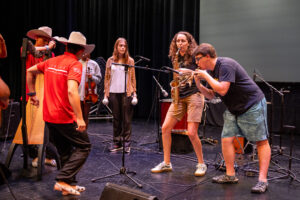
This eccentric team-up of musicians resulted in a hands-on learning opportunity that went beyond the academic realm. It’s one thing to see a band play on stage and feel inspiration from watching and listening – it’s another thing entirely to play music alongside the band; engaging in adaptive communication, teamwork and cultural enrichment.
“I just think about how important it is to break those barriers,” said Cadavid, “because we can try to talk about it in the classroom, but students really need to see it in action. To participate. So to see all of these intersections enrich the students, that ends up enriching my teaching.”
Most, if not all, of the Centre students who made connections with Cimarrón throughout the day came back for their evening performance, along with friends who would experience the group for the first time. Over 120 students were in the sold-out audience alongside members of the Centre and local communities.
With a quick count-in, Cimarrón was off again, with even more energy than the morning’s matinee, if possible. Audible gasps were heard when two of the instrumentalists leaped atop their cajóns (wooden box drums) and enthusiastic claps from the audience accompanied the lightning-quick percussive footwork of Cimarrón’s joropo dancing.
The band was met with another round of fervent applause and cheers when they entered the lobby after the show to meet patrons and new fans. Autographs were signed, photos were taken, and many students and patrons left the building that night with an entirely fresh appreciation for an aspect of Colombian culture.
Cimarrón’s visit to Kentucky, though it was only a day, became a transformative experience for the community, especially for Centre students. What began as a promise of unique entertainment quickly evolved into a cultural exchange and celebration of diversity that left an indelible mark on everyone involved.
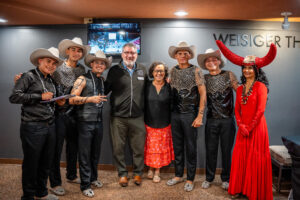
Eva Cadavid joined Centre’s faculty in 2008. She is Paul L. Cantrell Associate Professor of Philosophy. In 2019, she was named a Centre Scholar. Before coming to Centre, Cadavid taught at Hobart and William Smith Colleges and as an adjunct instructor at the Eastman School of Music. She is fluent in Spanish and English and can read fluently in French and Ancient Greek. Eva is a longtime Norton Center supporter and collaborator.
